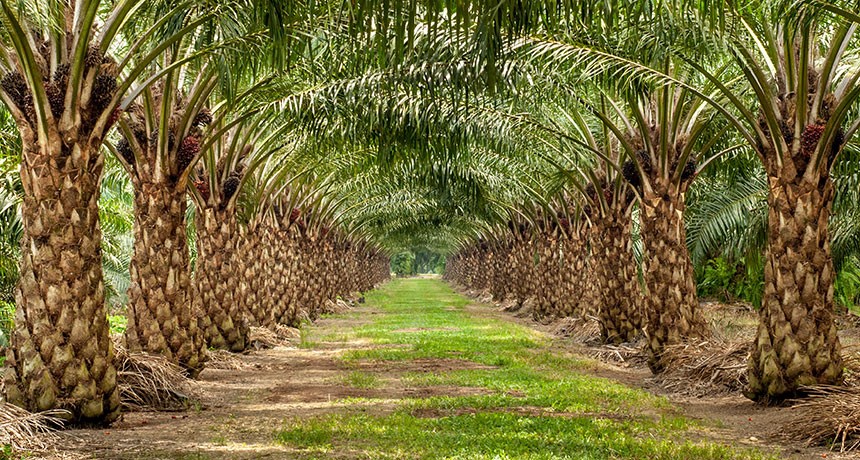Surely you saw many trees in your life. Wherever you go somewhere, you explores and sees many trees. I hope you have seen palm trees, tall sky touching, big leaves and thick. Going into your imaginations, come back! Yes, you are thinking right, big and tall palm trees near beaches, forests, hills, while driving on the roadside.
Apart from that, did you know why palm trees are famous for? Yes, true, for its palm oil. We all have heard about palm oil and its uses. But this information is not enough. Did you ever think, how palm oil is made? What is the process of palm oil? Process of cultivation of palm trees? Here we are to get you all information about a palm tree and palm oil. Just continue reading this post, you won’t regret it.
Palm Tree And Its Species
The Arecaceae is a family of permanent flowering plants in the monocot order Arecales. When the growth form is happening like climbers, shrubs, tree-like and stemless plants, all commonly known as palms, those having a tree-like form are called palm trees.

Currently, 2,600 species in 181 genera are known, limited to tropical and subtropical climates. Most palms are identified by their large, evergreen leaves, arranged at the top of an unbranched stem. However, palms show a huge variety of physical characteristics and inhabit nearly every type of habitat within their range, from rainforests to deserts.
Palms are the best known among many trees and the most widely cultivated plant families. Palm trees have huge cultivation in India according to the Indian regions. During cultivation, farmers take care of many things for productive palm tree farming. For sowing, seeding and ploughing, they need the best, strong farm vehicle. They mainly prefer Sonalika Tractor, which comes in their budget and gives better results as well.
Many common products and foods are obtained from palms. In modern times, palms are also extensively used in landscaping, making them one of the most economically important plants. For residents of cooler climates today, palms signify the tropics and vacations.
Palm Oil
Palm oil is an edible oil obtained from the reddish pulp of the fruit of the oil palms. The oil is used in many types of food manufacturing, in beauty products, and as biofuel.
The palm oil crop is one of the highest palm oil-producing crops among all enduring crops. In India, palm oil is being planted in 13 states by covering around 3,15,000 hectares by 2017-18 under irrigated conditions. Some potential states in India that produce the highest palm oil rate are Andhra Pradesh, Gujarat, Karnataka, Tamil Nadu, and Bihar.
It takes approximately four years for palm oil to produce fruits suitable for harvest. Each tree will produce fruit for up to 30 years, at which point they will have grown to around 40 feet tall. For good harvesting, farmers mainly prefer Swaraj Tractor, which completely lives up to their expectation and gives a satisfactory result.
Largest Palm Oil Producing State In India
Andhra Pradesh, around 83.5 per cent, along with Telangana, values around 97 per cent of India’s 278,000 tonnes of raw palm oil production. India is one of the biggest consumers of palm oil in the whole world.
One of the most significant users of palm oil is in India, the European Union, and China, with the three countries consuming nearly 50% of world exports.
Profitability Of Palm Oil
Palm oil is one of the most valuable lands used in the tropics. For the major producing countries, palm oil can significantly contribute to national economies, making rapid economic growth and contributing to rural poverty.
Climate Requirement For Growing Palm Oil
Climate Requirement for Palm Oil Cultivation:- Palm Oil tree is a sticky hot crop and grows best in the areas where the temperature ranges from 22°C to 24°C (minimum) and 20°C to 33°C (maximum). Palm Oil requires at least 5 to 6 hours of bright sunshine per day and 80% moisture for best growth.
Why Palm Oil Is So Cheap In Price?
Palm oil is so effective that using another oil would require up to 10 times the land to grow. This ability is the main reason the oil is so cheap. Palm Oil trees are evergreen and permanent. Palm trees produce oil all year around and can successfully grow in any soils that many other plants can’t.
Uses Of Palm Oil
Palm oil is used in food for frying and many processed foods. Palm oil is also used for making cosmetics, soaps, toothpaste, wax, ink, shampoo, ice cream and cooking oil. India is the biggest user of palm oil products, taking over 20 percent of the global supply.
We hope you are satisfied with this information about palm trees and palm oil. For more information about farming, crops and technologies, stay connected with TractorGuru.